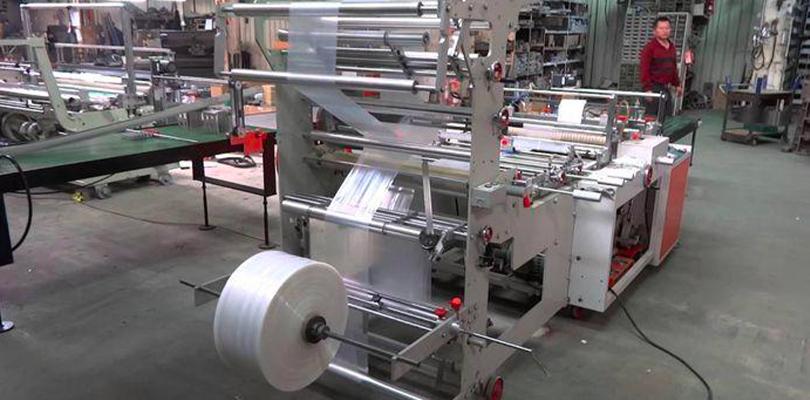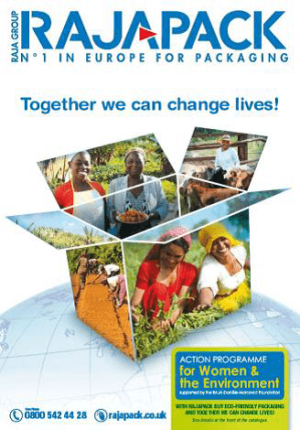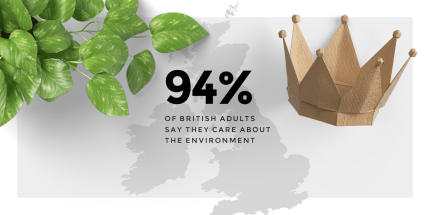The difference between stretch film and eco stretch film comes down to what each is made of – but both do a great job of protecting goods in storage or transit. Here we take a look at how stretch film works and how to choose between the two.
The difference between stretch film and eco stretch film
What is the difference between stretch film and eco stretch film? Good question. For those not in the know, stretch film is used to wrap around products and packages to protect them when in storage or transit, keeping them together and adding a layer of water, dust and dirt protection.
Eco stretch film, you may have guessed, is a more environmentally friendly version of the same.
Stretch wrap works by being stretchy. When it is wrapped around a box or pallet it is stretched into place. Once cut from the roll, the elastic recovery where it shrinks back, holds the items wrapped firmly in place.
So what is the difference between stretch film and eco stretch wrap?
Let’s start by looking at each to understand how they are made, what they are made from and how they are used – and the similarities and differences will become clear.
Stretch film wrap is essentially low-density polyethylene film on a roll, often with adhesive on each side, that can be wrapped around boxes or pallets to hold them together. The material is stretchy, so as you wrap it round from the roll, it stretches as it is applied then shrinks back, tightening its grip and holding the wrapped items together.
That’s the 30,000 foot view: there is, of course, more to it than that. Stretch film for packaging comes in a variety of widths, of different sized rolls and in up to six different thicknesses. It also comes in a range of colours.
Simple blown stretch film is sticky on both sides and is tear and puncture resistant. It comes in rolls that are 400 of 500mm wide and come on rolls that have a core diameter of 38 or 50mm. It is called blown stretch film as, when it is being made, a sheet of extruded polyethylene has air blown into it to make a bubble, the surface of which is the film that is then separated and turned into the film found on the roll.
Often applied by hand, the film can simply be rolled around the items being wrapped. Being adhesive it lightly sticks to the goods. It is also stretchy in both directions, so it forms a nice tight fit around the items being wrapped.
Mini 100mm rolls of cast stretch film can also be purchased, with their own handle and are ideal for wrapping small bundles, protecting parts of products, securing edge guard protection and wrapping difficult shapes. The sticks only to itself, leaving no sticky residue behind and stetches to three-times its original length.
It is called Cast film because when it is made it is extruded out onto a cooled roller, the speed of which determines the thickness of the finished film.
Not all stretch wrap has to be applied by hand. For larger jobs and to semi-automate the process, there is a range of machine stretch film and stretch film machines that can apply it for you.
For use in quieter areas or wrapping food, clear cast film in a range of widths is available for the machines, or if you want to conceal a parcel’s contents, strong and opaque black blown film is also available.
Stretch film, whether applied by hand of by machine, comes in a range of colours – typically black, blue, red, green and white – so that you can use it to not only protect your goods, but also to colour code them so you can identify what is on each wrapped pallet.
So, what is eco stretch film and what can it do? Eco stretch film can do all the same things that the stretch film above can do, only it is made from 80% recycled material, 30% from post-consumer waste and 50% from post-industrial waste.
It comes with a green tint, as well as clear and black, and offers a great eco-friendly alternative.
Transparent Recycled Stretch Hand Rolls which are tinted in green are available in 3 different thicknesses: 15µ, 17µ, 20µ. The black rolls are 17µ. The width of each roll is 450mm and the length is 300M. Core diameter 50 mm.
To help apply eco stretch film to larger pallets that are crush-sensitive, there are also a range of Ecowrap-semi automatic rotating arm stretch wrap machines available that can wrap up to 250 pallets a day.
So, there you have it, the difference between eco stretch wrap and stretch wrap is that the former is made from a high proportion of recycled material. They both do the same job, wrapping and protecting goods for storage or transit, and are both easy to apply (and when they arrive where they are going, easy to remove). Once removed, the wrap can be recycled.
Want to know more about our wide range of stretch film and eco stretch film?
For additional advice on stretch film wrap and eco stretch film wrap, our Experts are here to help you find the right solutions and arrange delivery. Simply call us on 0800 542 44 28 or visit RAJA UK
























